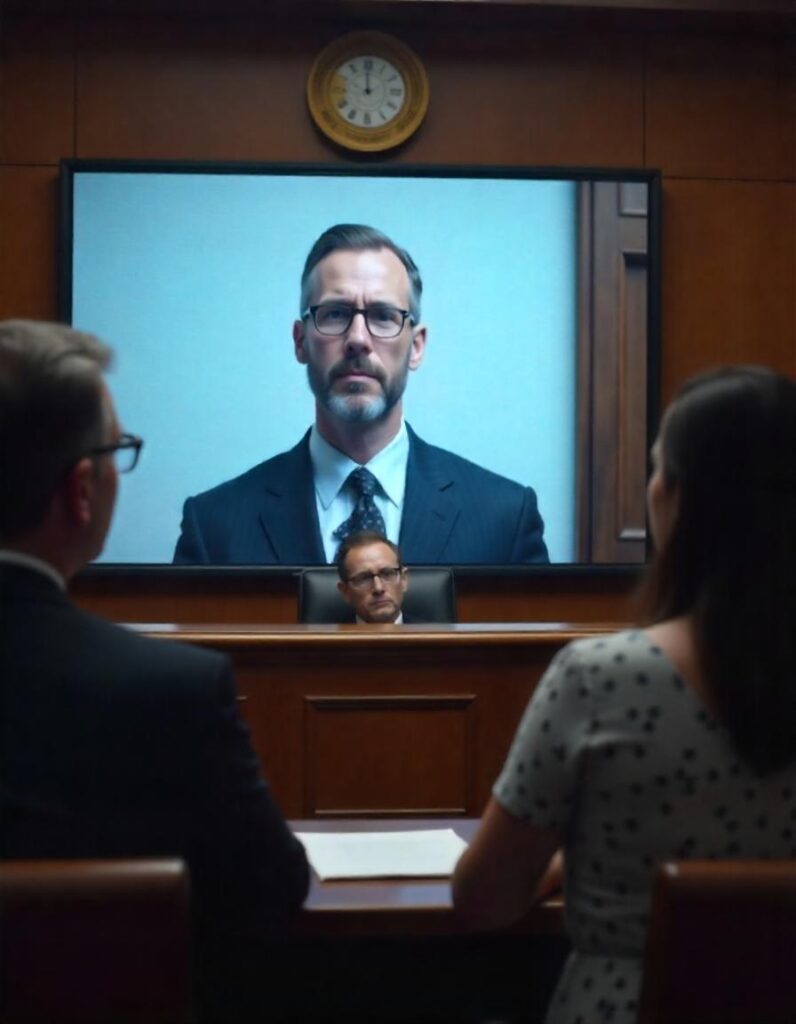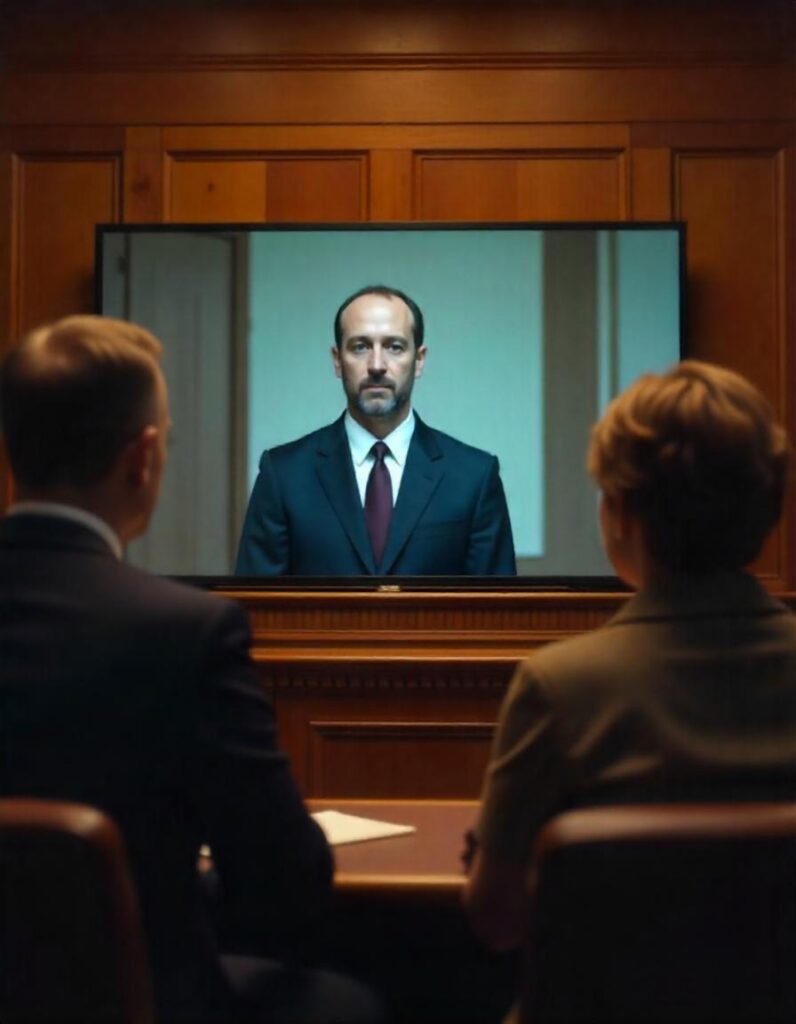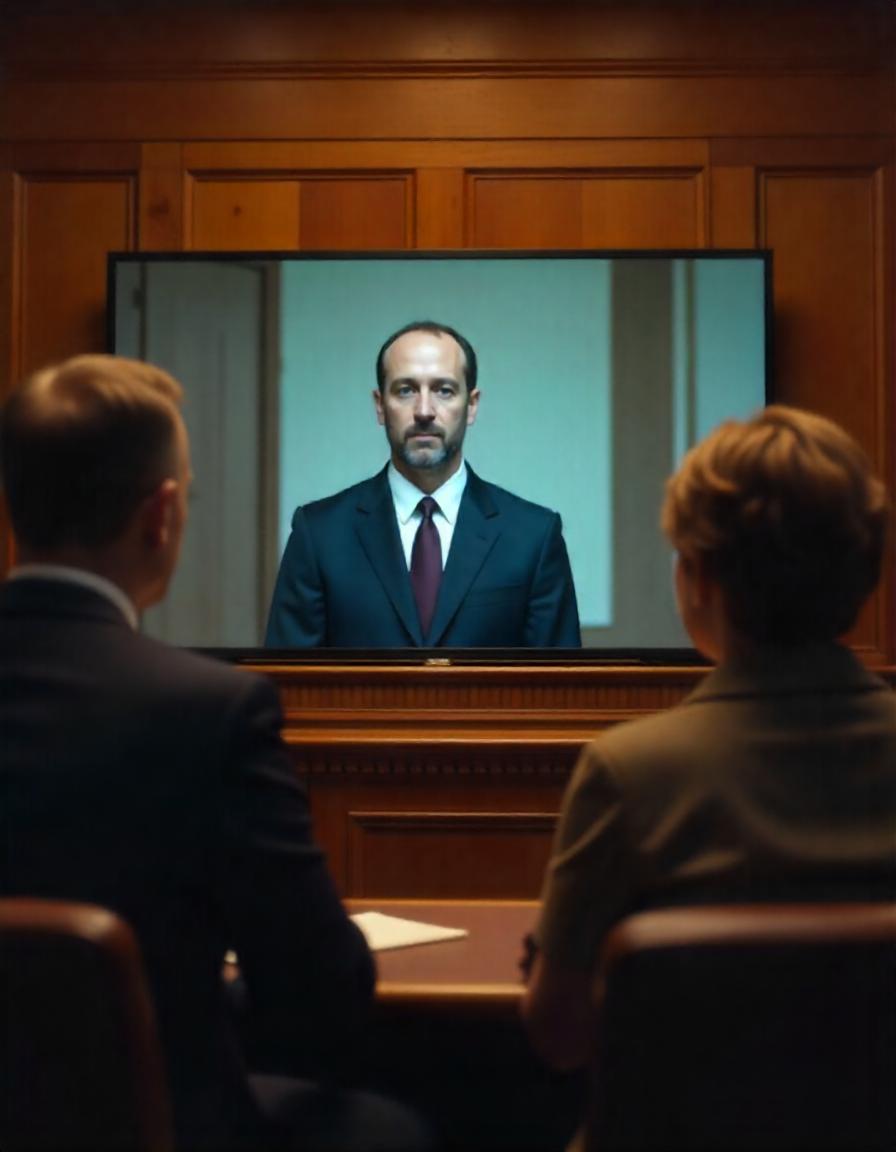In a groundbreaking legal moment, AI recreates Arizona road rage victim Chris Pelkey to deliver a message in court. Discover how this changes justice forever.
🧠 Introduction: When AI Gives the Dead a Voice—Is This the Future of Justice?

Imagine losing a loved one to a senseless act of violence—only for them to “return” and speak at their killer’s sentencing. Thanks to artificial intelligence, this exact scenario just unfolded in an Arizona courtroom. Chris Pelkey, killed in a tragic road rage shooting, reappeared in court—through a hyper-realistic AI-generated video—to confront the man who took his life.
The incident raises critical questions: Can AI help us heal? Or are we crossing an ethical line we’re not prepared for?
Let’s unpack how this happened, why it matters to the future of justice, and what it means for you.
❗ The Problem: A Justice System Struggling to Capture Human Loss
—

Traditional victim impact statements often fall short—they’re powerful, yes, but they’re limited to the emotions and words of the living. They can never fully encapsulate the loss of a person’s presence, voice, and soul.
Families of violent crime victims often feel powerless. They struggle with closure. And the legal system, bound by procedures, can’t offer the emotional resolution they desperately seek.
This creates a major gap:
- Judges don’t fully grasp the victim’s personality or impact.
- Perpetrators may never face the full emotional weight of their actions.
- Families leave courtrooms feeling unheard.
But what if we could change that?
—
🧩 The Solution: Using AI to Reclaim a Voice Silenced by Violence

Chris Pelkey was 37 years old when Gabriel Horcasitas shot and killed him in a road rage incident at an Arizona intersection. Four years later, AI gave him the final word.
Here’s how it worked:
✅ Step-by-Step AI Reconstruction Process:
- Family members gathered personal data: voice clips, photos, and home videos of Chris.
- AI tools synthesized this data to create a life-like digital avatar.
- His sister, Stacey Wales, wrote a heartfelt speech reflecting his values—especially his belief in forgiveness.
- The AI version of Chris read the statement in court, confronting his killer with humanity and grace.
The message stunned the courtroom.
🧠 Expert Insight: According to retired federal judge Paul Grimm, the use of AI in court is increasing. Arizona’s Supreme Court already uses AI to simplify rulings for public understanding. The tech is here—and it’s not going away.
—
📈 Why This Works—and Why It Matters
What made this AI impact statement revolutionary?
✨ It bridged emotion and evidence.
✨ It gave a voice to the voiceless.
✨ It brought emotional closure to grieving families.
Judge Todd Lang, who sentenced Horcasitas to 10.5 years for manslaughter, acknowledged the power of the message:
“I loved that AI. I heard the forgiveness,” he said. “I feel that was genuine.”
—
⚠️ The Risks: Is This the Start of a Slippery Slope?
While this technology inspired many, critics urge caution.
Carnegie Mellon ethics professor Derek Leben warns:
“If other families do this, how do we ensure the AI aligns with the victim’s true values? Will it be manipulated?”
This isn’t just a legal tool—it’s a mirror reflecting our ethics.
⚖️ So where do we draw the line between innovation and exploitation?
—
💡 The Transformation: What This Means for the Future of Grief, Justice, and AI
With responsible use, AI could revolutionize how we:
- Deliver victim impact statements
- Reconstruct unsolved crimes
- Offer emotional closure to families
- Engage jurors and judges with human-centered storytelling
But it demands strong ethical guidelines and transparency. The line between healing and misuse must never be blurred.
—

🚀 Take Action: What You Can Do Today
✔️ If you’re part of the legal, tech, or ethical community—start the conversation now. AI isn’t coming—it’s here. Be part of shaping how we use it ethically.
✔️ If you’ve lost someone to violence—know that new tools like these are giving families more power, voice, and closure than ever before.
✔️ For policymakers and courts—develop AI usage standards in legal proceedings to preserve authenticity and protect emotional truth.
🛡 Technology, like a hammer, can destroy or build. Let’s choose to build.
—🔚 Conclusion: Reclaiming Voices, Redefining Justice
Chris Pelkey’s final message wasn’t just about justice—it was about redemption, forgiveness, and the power of technology to give the unheard a voice.
As we step into a new era where artificial intelligence meets human grief, we must ask: are we ready?
👣 Don’t just watch history happen. Be part of shaping it.
📩 Subscribe to our newsletter for more insights on emerging technologies and justice reform.
📌 FAQs
Q: Was Chris Pelkey’s AI video used during a trial?
A: No. The AI video was presented only at the sentencing phase, after the guilty verdict was delivered.
Q: Who created the AI version of Chris?
A: Chris’s family collected data and used third-party AI tools to generate the video. His sister wrote the speech.
Q: Is AI being used in other Arizona court systems?
A: Yes. Arizona’s Supreme Court uses AI to simplify legal rulings for the general public.
Q: Can anyone create an AI-generated impact statement?
A: Technically, yes. But ethical considerations must be taken seriously to prevent misuse.
